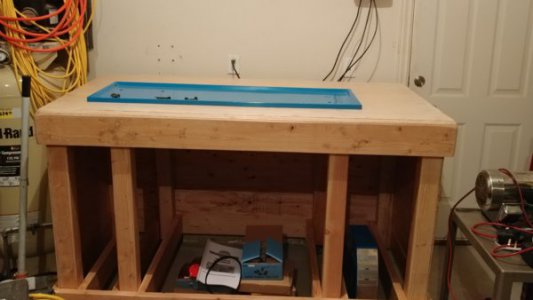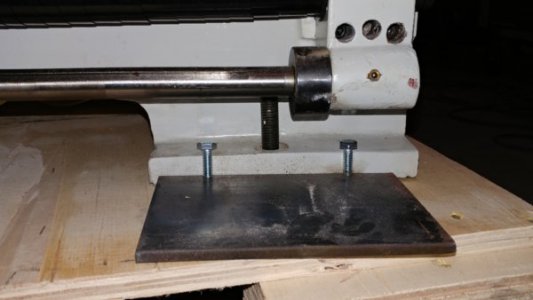I have been there and here is my toughts on the subject...
- You DO need adjustable feet, wood will shrink and expand with humidity changes. Here in Québec this is quite major as in summer we can hit 100% RH and in winter with heating system everything becomes bone dry and you get static shock with every door knobs, cat, dog or girlfriend you touch!

- adjustable feet are very easy to make with hockey pucks, threaded rod, large washers and a fisful of nuts
- I would not use a wood base for a lathe. Lathe beds can become twisted if everything is not
perfectly straight
- Epoxy, paint, spar varnish, or any coating agent is OK with wood but it will eventualy crack, peel, get scratched and you will have humidity swelling problems
- MDF reacts and swell a lot with RH variations!
- Baltic birch plywood is the best material for shop furniture!
- For a lathe base i would definitely prefer steel as basic material. Even if you don't have a welder, you can devise some simple way to build a very sturdy bench using nothing but a zip cut tool, a drill and some files. And metal is easy to buy locally anywhere. Get 1X2 for reenforcement, 2X2 for structure and 2X4 for footing and you can build a base where a tank can go over! The trick is to design the structure where the pressure is always on top of the piece underneath. For exemple, a piece of 2X4 is used as footing to spread the weight on the floor. A 2X2 leg is held in place with some reinforcement plates and screws on top of that footing. The top cross member rest on top of the leg and so forth. This way, the screwed or bolted on gussets, angle brackets and what nots never bear any structural load, they are there just as 'glue' so things don't fly apart. Believe me, I have built structures that can support a few tons this way!
- Mehhh! don't use wood for machine tool bases!



